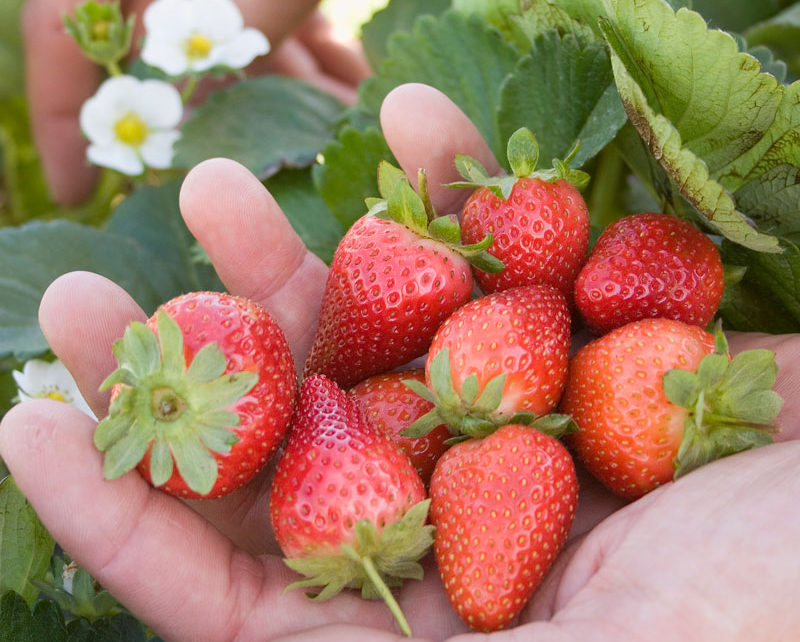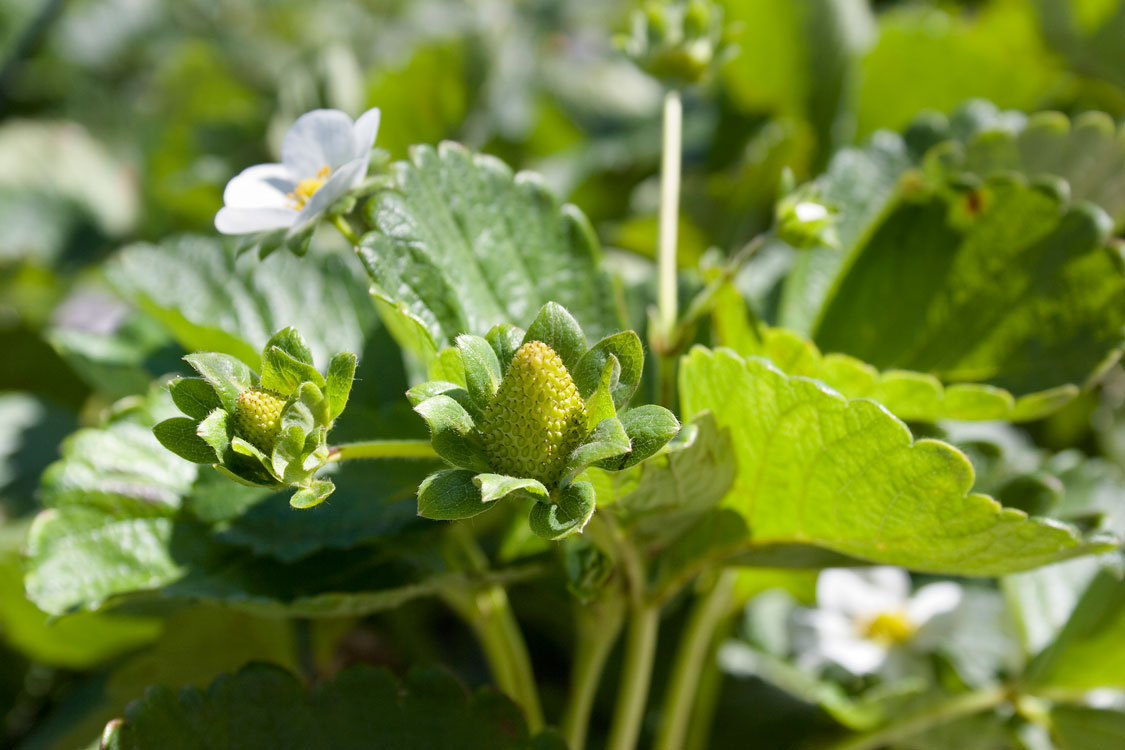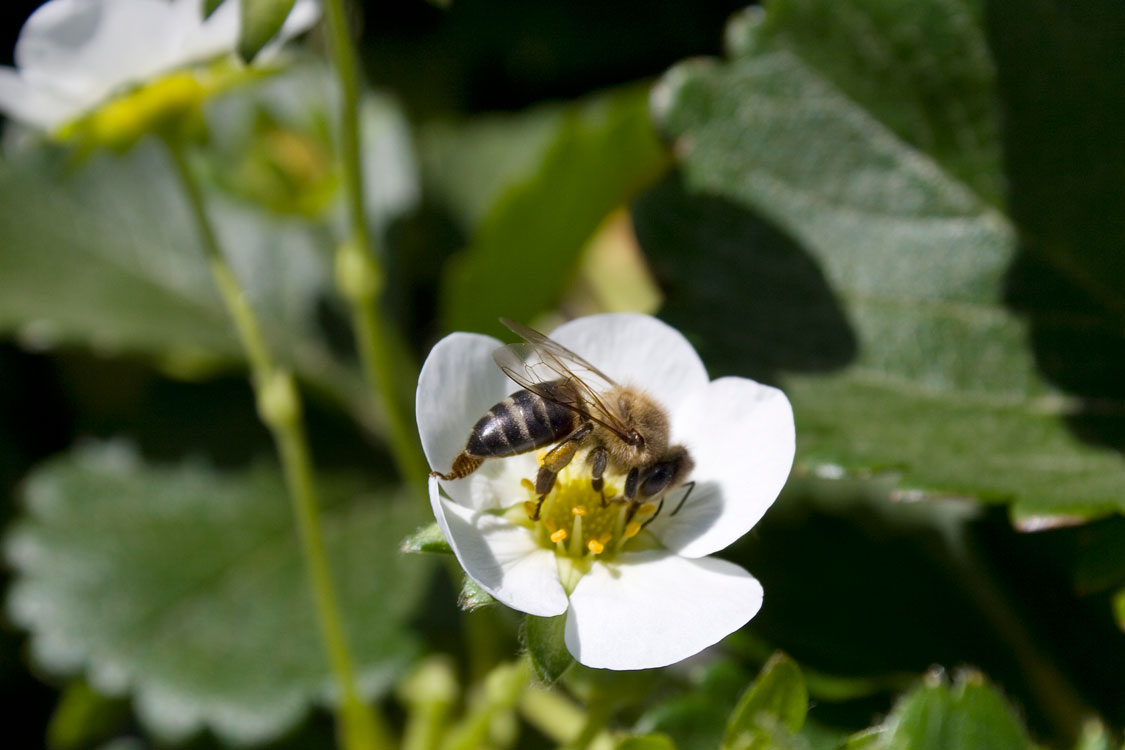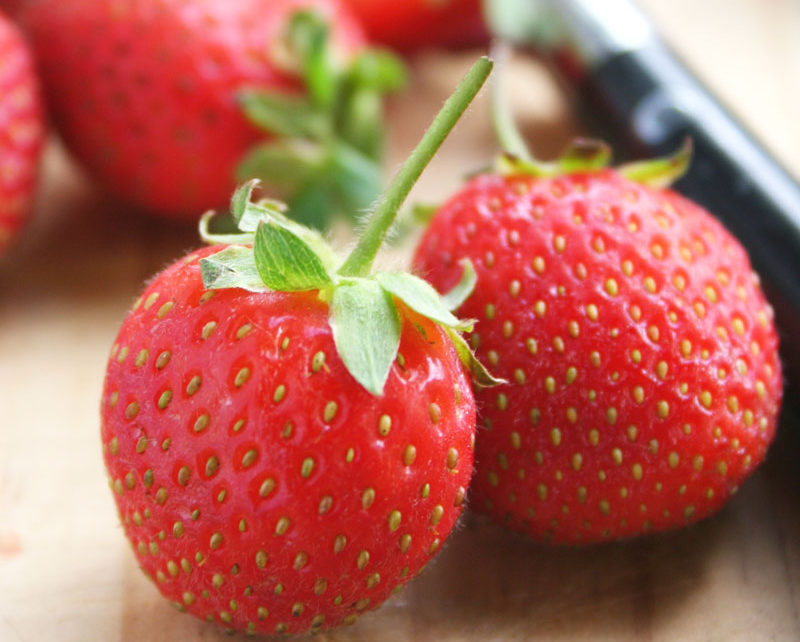The delicious sweet fruit are top the list for the food gardener,here’s what you need to know about growing strawberries.
Fragaria ananassa have been made what they are – fat, sweet and luscious – by the crossing of two strains from the Americas: F. chiloensis from Chile and F. virginiana from the east coast of the United States. Always a delicious treat, no matter where they’re served, whether at a banquet with champagne on green lawns in the early summer or at a spur-of-the-moment beach picnic at the end of a hot day, they add ambrosial elegance to any meal. That’s why knowing the secrets to growing strawberries can come in handy.
YOU MIGHT LIKE: STRAWBERRY ICE CREAM
STRAWBERRY BENEFITS BEYOND TASTE

TRY THIS RECIPE: STRAWBERRY LEMON SORBET
- They’re true multipurpose plants which double the benefits of your landscape without doubling the size of your garden or the work involved.
- As a groundcover, they can be planted in those partially-shaded spots in your garden, offering a tasty feast at the same time as protecting your soil.
- Strawberries are rich in vitamins and minerals. They pack a punch when it comes to boosting the immune system, fighting disease and restoring health. And remember that red (and blue) berries are believed to be cancer-fighting fruits. Strawberry juice may be used to soothe sunburn and skin blemishes and can whiten teeth and tone gums.
- The leaves are rich in iron and vitamin C and make an excellent tea which can also be used to treat diarrhoea, kidney problems, throat infections, digestive upsets and relieve gout.
- Strawberries fit well into weight-control programmes as they have very few calories.
- All things considered, they make an excellent choice as a garden plant and they’re easy to grow if you follow a few simple guidelines – full sun (although they also cope in dappled light) and richly mulched, well-drained soil.
READ MORE: Growing Cape Gooseberries
PREPARING BEDS
Strawberries live their three-year life span in the same bed. Prepare it well for a bountiful crop. About a month before planting, dig loads of compost and well-rotted kraal manure into the top 30cm of the soil. Add a dressing of bone meal, especially if don’t have access to manure.
Strawberries prefer a slightly acid to neutral soil (pH 6–7). A light sprinkling of lime or wood ash forked into the soil corrects acidity levels. Potassium in the wood ash stimulates flower and fruit formation.
PLANTING STRAWBERRIES

Obtain good, virus-free runners from a reliable nursery in early autumn. If you already have a strawberry patch, the plants will start throwing out runners in autumn. These take root in the soil around the parent plant. Cut and transplant them into a new bed.
MORE LIKE GROWING STRAWBERRIES: Growing blueberries
Plant 20cm apart in slightly raised rows (40cm apart) for good drainage and mulch with straw. Pine needles added to the straw improve the flavour of the fruit. Autumn leaves or well-rotted leaf mould also make excellent mulch that prevents mud, bearing fungal spores, from splashing onto the fruit when it rains and to prevent competition from weeds. Firm the soil around each plant to encourage flower formation. Water deeply at the roots of each plant.
SUCCESSFUL TIPS FOR GROWING STRAWBERRIES

- Don’t plant strawberries where you have grown potatoes, tomatoes and peppers previously as there will be potential pathogens lurking in the soil.
- Set plants out so the crowns are not buried but are resting at ground level. Shallow planting may lead to drying out and deep planting may cause the crowns to rot.
- They need plenty of water and compost.
- In the first season, remove flowers and runners to enable strong growth. Later in the year, peg down four runners per plant to take root.
READ MORE: Growing blackberries and raspberries
- Strawberries are loved by everybody – birds, rats and mice, millipedes, beetles, snails and slugs, bollworms and crickets. Your best protection against your competitors is netting – black shade cloth or orange mesh bags stitched together and draped over stakes with the edges held down with stones. Other common pests are aphids and red spider mites which attack the leaves.
- Plant borage in your strawberry patch. The beautiful blue flowers look striking with the red berries. Borage attracts bees which will aid pollination of the strawberries ensuring a good harvest. Borage leaves are also rich in the minerals that strawberry plants require and so they make excellent mulch. Other good companion plants are beans, spinach and roses.
- For a worthwhile harvest, the minimum number of plants to start with is 25. These will have multiplied several times before the first harvest and, before you know it, you’ll have more strawberries that your family can eat, plus there’ll be a surplus for freezing, preserving and sharing with your friends and neighbours. Your home-grown strawberries will truly delight your taste buds, especially if eaten warm from the sun.
For more gardening advice, visit lifeisagarden.co.za or your nearest garden centre


